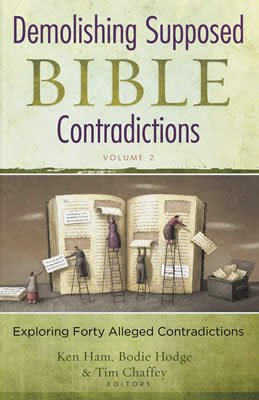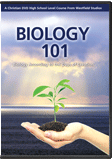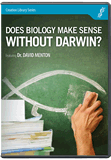
Planting Confusion
Were plants created on Day Three or Day Six?
Critics have charged that the first two chapters of the Bible contain a contradiction regarding the creation of the vegetation. Tim Chaffey, AiG–U.S., explains.
The “Problem”
Critics have charged that the first two chapters of the Bible contain a contradiction regarding the creation of the vegetation. Some old-earth creationists have pointed to the same passages to bolster their claim that the early chapters of Genesis need not be interpreted as historical narrative. The passages are found in Genesis 1 and 2.
Then God said, “Let the earth bring forth grass, the herb that yields seed, and the fruit tree that yields fruit according to its kind, whose seed is in itself, on the earth”; and it was so. And the earth brought forth grass, the herb that yields seed according to its kind, and the tree that yields fruit, whose seed is in itself according to its kind. And God saw that it was good. So the evening and the morning were the third day. (Genesis 1:11–13)
This is the history of the heavens and the earth when they were created, in the day that the Lord God made the earth and the heavens, before any plant of the field was in the earth and before any herb of the field had grown. For the Lord God had not caused it to rain on the earth, and there was no man to till the ground; but a mist went up from the earth and watered the whole face of the ground.
And the Lord God formed man of the dust of the ground, and breathed into his nostrils the breath of life; and man became a living being. The Lord God planted a garden eastward in Eden, and there He put the man whom He had formed. And out of the ground the Lord God made every tree grow that is pleasant to the sight and good for food. The tree of life was also in the midst of the garden, and the tree of the knowledge of good and evil. (Genesis 2:4–9)
The Solution
There is a rather simple solution to this alleged contradiction. On the third day of the Creation Week God made certain types of plants: “grass, the herb that yields seed, and the fruit tree
” (Genesis 1:11). Each of these terms translates specific Hebrew terms for grass (deshe’), the seed-yielding herbs (‘eseb mazria zera), and the fruit trees (ets pariy).
Beginning with the fourth verse of Genesis 2, the writer zooms in on the events of the sixth day. God made Adam (v. 7), the Garden of Eden along with the plants therein (specifically mentioned are the fruit trees, vs. 8–9), and Eve (v. 22).
What about the plants described in verse 5? Why weren’t those created on Day Three when God made the other plants? The context provides the answer. Verses 5 and 6 provide a description of what the world was like prior to the creation of man. Two specific types of plants are translated from specific Hebrew terms: “plant of the field” (siah hassadeh) and “herb of the field” (eseb hassadeh). Hebrew scholar Mark Futato defines these terms as “wild shrubs of the steppe” and “cultivated grain” respectively.1
This verse is preparing the reader for what is going to happen next in the narrative. The herbs of the field were not around because Adam had not been created yet, so there was no one to till or cultivate the ground. The “wild shrubs of the steppe” are plants that often have thorns, and these thorns would not have been present until after the Curse.2
While announcing the Curse, God said to Adam, “Cursed is the ground for your sake; in toil you shall eat of it all the days of your life. Both thorns and thistles it shall bring forth for you, and you shall eat the herb of the field. In the sweat of your face you shall eat bread till you return to the ground, for out of it you were taken; for dust you are, and to dust you shall return
” (Genesis 3:17–19, emphasis added).
As a result of the Curse, Adam would no longer have it easy. Instead of eating the abundance of fruit from the trees in the garden, he would need to till the ground and grow crops for food.3 This would be hard work, because the ground was now going to produce thorns and thistles.
Conclusion
A closer look at the text reveals there is no contradiction. In Genesis 2:5–6 the writer set up the narrative and informed the reader of what was to come. These verses provide a description of the world on Day Six before God created Adam. The grasses, fruit trees, and seed-yielding herbs were created on Day Three (with the exception of those within the garden), but the thorny plants and cultivated grains came about after Adam was created.
Demolishing Supposed Bible Contradictions: Volume 2
Footnotes
- Mark Futato, “Because It Had Rained: A Study of Gen 2:5–7 With Implications for Gen 2:4–25 and Gen 1:1–2:3.” Westminster Theological Journal, 60:1–21, (Spring 1998), 4. It may not be the best practice to identify something as “wild” prior to the Fall, but the definition given here is based on how the term is commonly understood—not just before sin.
- Kenneth L. Gentry and Michael R. Butler, Yea, Hath God Said? (Eugene, OR: Wipf and Stock Publishers, 2002), 91.
- Genesis 2:15 does state that Adam was put in the garden to “
tend and keep it.
” The word tend likely refers to cultivation, but this still fits within the proposed solution since Genesis 2:5 states that the “herb of the field
” had not grown yet since it had not rained and “there was no man to till the ground.
”
Recommended Resources

Answers in Genesis is an apologetics ministry, dedicated to helping Christians defend their faith and proclaim the good news of Jesus Christ.
- Customer Service 800.778.3390
- © 2025 Answers in Genesis





